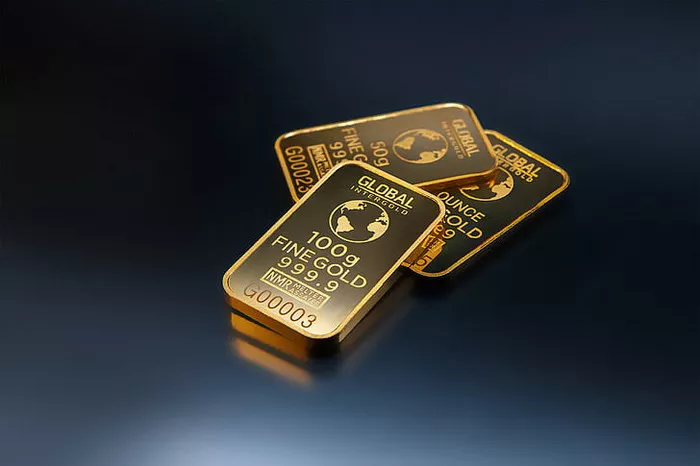Gold has been cherished for centuries, not only as a medium of exchange but also as a symbol of wealth and luxury. Among the various purities of gold available, 22K and 24K gold are two of the most common options. This article will explore the differences between 22K and 24K gold, helping you understand their properties, benefits, and which one might be the best choice for your needs.
Understanding Gold Purity
What Does Karat Mean?
The term “karat” (or “carat”) refers to the purity of gold. Pure gold is 24 karats, meaning it contains 99.9% gold content. As the karat number decreases, so does the percentage of pure gold. Here’s a quick breakdown:
24K Gold: 99.9% pure gold, the highest purity available.
22K Gold: 91.6% pure gold, mixed with other metals (8.4%).
18K Gold: 75% pure gold.
14K Gold: 58.3% pure gold.
10K Gold: 41.7% pure gold.
How is Gold Purity Measured?
Gold purity is typically measured in karats, but it can also be expressed in percentage. To convert karats to percentage, the formula is:
Percentage=( Karat/24 )×100
For example:
24K gold: (24/24)×100=100%
22K gold: (24/22)×100≈91.67%
Properties of 24K Gold
1. Purity and Value
24K gold is the purest form of gold available, making it the most valuable. Its high purity means it retains its value well and is a popular choice for investors.
2. Color and Appearance
24K gold has a rich, vibrant yellow color, making it highly desirable for jewelry. Its luster is unmatched, giving it a luxurious appeal.
3. Malleability
Being pure gold, 24K is highly malleable. It can be shaped into intricate designs but is also more prone to scratching and bending.
4. Corrosion Resistance
24K gold is highly resistant to tarnish and corrosion, ensuring that it maintains its appearance over time.
5. Uses
Due to its softness, 24K gold is often used in:
Investment products (bullion coins, bars).
High-end jewelry (though not as common due to durability issues).
Properties of 22K Gold
1. Purity and Value
22K gold contains 91.6% gold, making it less valuable than 24K but still a high-purity option. It strikes a balance between purity and durability.
2. Color and Appearance
22K gold has a slightly less vibrant yellow hue than 24K gold, but it still retains much of the luster associated with high-quality gold jewelry.
3. Durability
The addition of other metals (such as copper, silver, or zinc) in 22K gold increases its strength and durability, making it less prone to scratching and bending than 24K gold.
4. Alloy Characteristics
The alloyed metals in 22K gold can also influence its color and properties, providing options for varying shades and characteristics.
5. Uses
22K gold is widely used for:
Traditional jewelry, particularly in countries like India and the Middle East.
Some investment pieces, though less common than 24K.
Comparing 22K and 24K Gold
1. Purity and Value
24K Gold: Highest purity and value, ideal for investors and collectors.
22K Gold: Slightly lower purity and value, but more practical for everyday wear.
2. Durability
24K Gold: Soft and malleable; may scratch or bend easily.
22K Gold: More durable due to alloyed metals; better for daily use.
3. Color
24K Gold: Rich, vibrant yellow; the most visually appealing.
22K Gold: Slightly less vibrant but still retains a beautiful golden color.
4. Cost
24K Gold: Generally more expensive due to higher purity.
22K Gold: More affordable, making it a popular choice for jewelry.
5. Applications
24K Gold: Preferred for investments and specialty items.
22K Gold: Commonly used in jewelry, particularly in traditional designs.
Which is Best for You?
1. Investment vs. Jewelry
If you are looking for an investment, 24K gold is the better choice due to its higher purity and value.
For jewelry that you plan to wear regularly, 22K gold offers a good balance of beauty and durability.
2. Personal Style and Preference
If you prefer the rich, deep color of pure gold, 24K gold might be more appealing.
If you favor more intricate designs that require added strength, 22K gold may be the better option.
3. Cultural Significance
In many cultures, the choice between 22K and 24K gold can be influenced by tradition. For instance:
India: 22K gold is commonly used for wedding jewelry.
Middle East: Higher purity gold, like 24K, is often preferred for investment pieces.
Caring for Your Gold Jewelry
Regardless of whether you choose 22K or 24K gold, proper care will help maintain the beauty and longevity of your jewelry.
1. Cleaning
24K Gold: Use a soft cloth and mild soap. Avoid harsh chemicals that can damage the surface.
22K Gold: Can be cleaned similarly, but take extra care not to scratch the surface due to potential alloy reactions.
2. Storage
Store gold jewelry separately to prevent scratching.
Use soft pouches or lined jewelry boxes.
3. Regular Maintenance
Take jewelry to a professional jeweler for regular inspections and cleanings.
Check for loose stones or damage.
Conclusion
Choosing between 22K and 24K gold ultimately depends on your needs, preferences, and intended use. 24K gold offers unmatched purity and value, making it ideal for investment and special occasions. On the other hand, 22K gold provides a practical option for everyday wear while still maintaining a high level of beauty and quality.
By understanding the differences and characteristics of each, you can make an informed decision that aligns with your lifestyle and preferences. Whether you’re investing in gold or simply looking to adorn yourself with beautiful jewelry, both 22K and 24K gold have much to offer.
Related topics:
- How to Test 18K Gold at Home: A Comprehensive Guide
- Understanding the Value of 10K Gold: A Comprehensive Guide
- Best Strategies for Gold Scalping: A Comprehensive Guide


